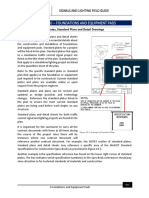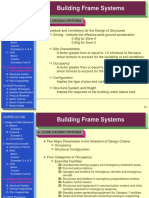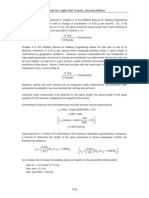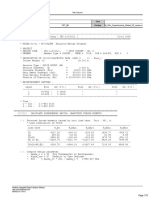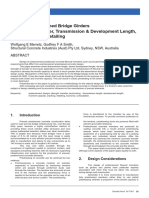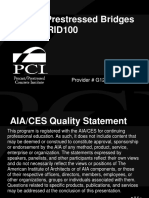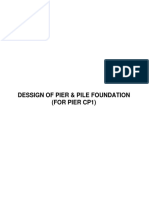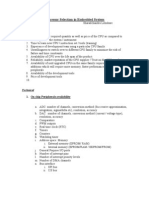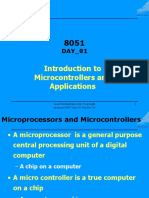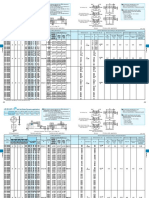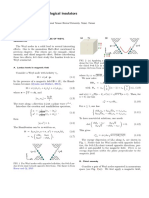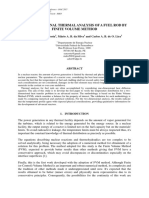MODULAR BOARD DESIGN
�INTRODUCTION
Why some architecture are more adaptive than others?
What going to happen if requirement changes?
What is the best way to accommodate a change? Shall
we rere-factor?
�MCS51
MCS
51 SYSTEM OVERVIEW
SEEPROM
EPROM
RAM
MCU
(AT89C55WD)
EXPANDED
I/O
PARAREL
INTERFACE
WATCHDOG
PARAREL
INTERFACE
SOUNDBOARD
RS232
RECONFIGURABLE I/O
TICKET,BUTTON,DISPLAY,
OTHER DEVICE
�WHY IS NEEDED?
Design improvement
Development needs
New feature
�WHAT IS NEEDED?
New Interface Expandability
Size of memory
Speed
Security
Standard
Cost effective
Reliability
Simple interinter-connection
5
�REQUIREMENT OVERVIEW
REQUIREMENT
Performance
Processor Architecture/Core
Clock Speed/Throughput
Bus width
Program Memory Size
Memory Size
Security
Reliability
Standards
Programming language
Networking,Connection
Compliant
Capability
Modifiability
Testability
Debug support
User Friendliness
Availability
Compiler
Device Status
Vendors
Cost:
Processor
Board
AT89C55WD
AT89C51RE2
ATMEGA
?
?
Having the device appear to the user to be functioning fast enough, having the device do what it is supposed to be doing, throughput
thr
of processor,
etc
CISC/80C51 Compatible
CISC/80C52 Compatible
RISC/AVR
Up to 33MHz/approx 2MIPS
8 bit
Up To 20KB (internal flash)
Up to 64 KB (external)
256 Byte (internal memory)
Up to 64 KB (external)
Up to 60MHz/approx 4MIPS
Up to 16MHz/approx 16 MIPS
8 bit
8 bit
Up to 128 KB (internal flash)
Up To 256 KB (internal flash)
Up to 64 KB (external)
256 Byte (internal memory)
4KB on-chip EEPROM
8K Byte on chip XRAM
8KB on-chip SRAM
Up to 64 KB (external)
Up to 64 KB (external)
Is it safe from competitors, idiot-proof, etc.
Each game have difference id
?
?
(programmed in PAL)
Does it crash or hang, how often does it crash or hang, what happens if it crashes or hangs, what can cause it to crash
c
or hang, etc.
Proof reliable, have off-chip
?
?
hardware watchdog system
Industry standards (programming language standards, networking standards, etc.)
C
C
C
RS232, JAMMA
?
?
ROHS
ROHS
ROHS
Specifying the list of features that the device needs to have for the game, understanding what the device actually can do, etc.
et
Full duplex UART
ISP (In-System
System Programming)
ISP
Hardware Watchdog Timer
SPI (Serial Port Interface)
Up to four Full duplex UART
Full duplex UART
Hardware Watchdog Timer
Hardware Watchdog Timer
SPI
TWI (Two Wire Interface)
TWI
How fast it can be modified for bug fixes or upgrades, how simple it is to modify, etc.
Reconfigurable I/O base on
?
?
PPI8255
How easily can the system be tested, what features can be tested, how can they be tested, are there any built in features to allow testing, etc.
JTAG (IEEE std. 1149.1
Compliant) Interface
AVR JTAGICE mkII (freeware)
How easy it is to use, how easy it is to assembly, etc
Most of R&D programmer
Most of R&D programmer
Few of R&D programmer familiar
familiar with MCS-51
familiar with MCS-51
with AVR microcontroller
Will any of the commercial software or hardware implemented in the system be available when needed, when will they be available,
availab what are the
reputations of vendors, etc.
Hi-tech (license)
Hi-tech (license)
AVR Studio 4 (freeware)
SDCC (freeware)
SDCC (freeware)
GNU C Compiler (freeware)
Active
Active
Active
ATMEL
ATMEL
ATMEL
How much will the device cost, how much will it cost to repair or upgrade, etc.
USD$4.3 (AT89C55WD)
USD$10.3 (AT89C51RE2-USD$12.75 (AT90SC1280-16AU)
SLSUM)
USD$17.38 (AT90SC2560-16AU)
USD$65 (CURRENT BOARD)
TBA
TBA
�WHAT TO PROPOSE ?
�WHAT TO PROPOSE ?
Designing and implementing a reusable and pluggable
hardware and software framework that can be use in any game
application without the need to rere-implement lowlow-level
communication interfaces with selected hardware
MODULAR BOARD SYSTEM
�MODULAR SYSTEM
Modularity is general systems concept, typically defined as a
continuum describing the degree to which a systems
components may be separate and recombine
recombine.. It refers to both
the tightness of coupling between components, and the degree
to which the rules of the system architecture enable (or
prohibit) the mixing and matching of components
components..
�MODULAR SYSTEM (continue)
In the context of systems engineering, modular design or
"modularity in design" is an approach aiming to subdivide a
system into smaller parts (modules) that can be independently
created and then used in different systems to drive multiple
functionalities..
functionalities
1
0
�WHY MODULAR ? - KEY BENEFIT
Optimum scalability and flexibility; The hardware can be
choose from wide range of I/O boards and processor boards to put
together exactly the hardware that need for the game project.
System growth, both in size and in addition of new capabilities,
was accomplished simply by adding new modules (new processor
technology or new I/O system) that could interact with existing
ones using standard interfaces.
Simpler process of duplication; Duplicating a number of
smaller, less complicated modules was easier, faster, and more
reliable than duplicating a single complicated one. More parts
equal greater risk of failure.
Fault tolerance and rapid adaptation to the requirement
changes; By adding, subtracting, or modifying the module,
incremental design changes could be more quickly tried and either
adopted or rejected.
1
1
�WHY MODULAR ? - KEY BENEFIT (continue)
Ability to specialize the function of modules
modules;; Individual
module can be configured with software as desired by the user
user..
Expandability;; The hardware can be set up both single
Expandability
single-processor and multiprocessor systems with a processor board
as a base, and then adapt the system to the tasks by connecting
I/O boards
boards.. The system can be expand or adapt to new projects
at any time
time.. The type and number of I/O interfaces, the
computing performance, and I/O capabilities can easily be
expand by adding further boards to the system
system..
Cost Reduction
Reduction;; the modular architecture will reduce the cost
due to lesser customization, reusable both hardware and
software, and less learning time
time..
1
2
�WHAT KIND OF MODULAR SYSTEM?
Multi--platform microcontroller
Multi
Form Factor standard (PC/104
104,EPIC,etc...)
,EPIC,etc...)
Interface standard (ISA,PCI,I2
(ISA,PCI,I2C,SPI,etc...)
1
3
�PC/104
PC/
104 OVERVIEW
1
4
�PC/104
PC/
104 OVERVIEW (continue)
1
5
�MODULAR SYSTEM - ARCHITECTURE
AN ALOG
I/ O M O D U L E
D IG IT A L
I/O M O D U L E
NETW ORK
M ODULE
IS A B U S
CONTROLLER
M ODULE
CONTROLLER
M ODULE
S E R IA L B U S
NETW ORK
M ODULE
CONTROLLER
M ODULE
IS A B U S
H IG H C U R R E N T
D R IV E R M O D U L E
D E D IC A T E D I N P U T
M O DU LE
SOUND M ODULE
1
6
�MODULAR SYSTEM ARCHITECTURE (continue)
1
7
�MODULAR SYSTEM ARCHITECTURE (continue)
RS232
RAM
USB
RS422/485
MCU
JTAG
ISA
INTERFACE
WATCHDOG
I
S
A
SERIAL
INTERFACE
B
U
S
OTHER MODULE
1
8
�MODULAR SYSTEM ARCHITECTURE (continue)
ISOLATED
INPUT
I/O DRIVER
ISA
INTERFACE
ISOLATED
OUTPUT
WATCHDOG
I
S
A
B
U
S
SERIAL
INTERFACE
OTHER MODULE
1
9
�MODULAR SYSTEM ARCHITECTURE (continue)
WATCHDOG
SPEAKER
AUDIO
AMPLIFIER
AUDIO
PROSESSOR
ISA
INTERFACE
SPEAKER
I
S
A
B
U
S
SERIAL
INTERFACE
OTHER MODULE
2
0
�REFERENCE
www.wikipedia.org
Tammy Noergaard, Embedded System Architecture A Comprehensive Guide for
Engineer and Programmers,
Programmers, Elsevier Inc., 2005
Atmel, AT
AT89
89C
C55
55WD
WD Datasheet,
Datasheet, Atmel Corporation, 2000
Atmel,8-bit AVR Microcontroller Datasheet , Atmel Corporation, 2000
Atmel,
PC/104
PC/
104 Embedded Consortium, PC/104
PC/104 Specification version 2.6, PC/104
PC/104 Embedded
Consortium, 2008
PC/104
PC/
104 Embedded Consortium, EPIC and EPIC Express Specification version 3.0,
PC/104
PC/
104 Embedded Consortium, 2008
PC/104
PC/
104 Embedded Consortium, EBX and EBX Express Specification version 3.0, PC/104
PC/104
Embedded Consortium, 2008
2
1











